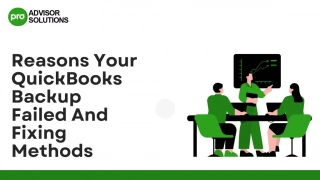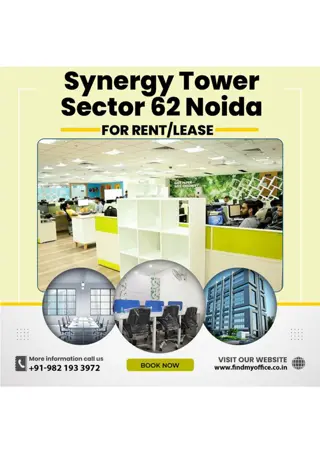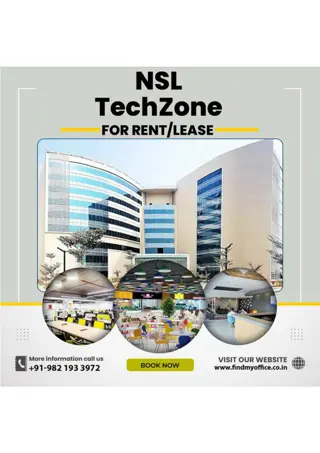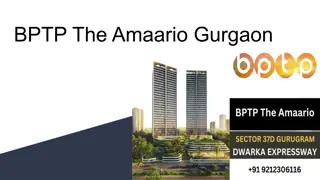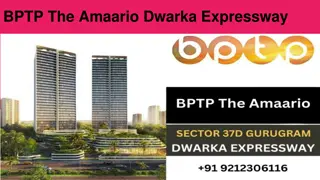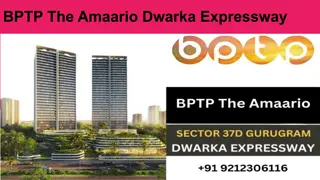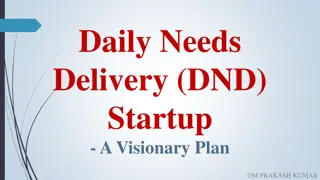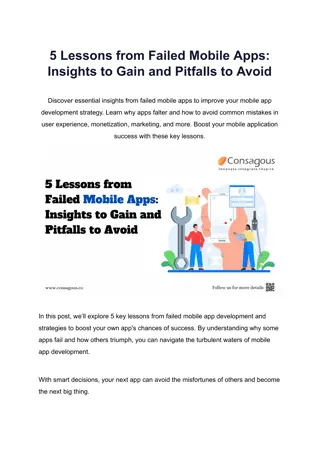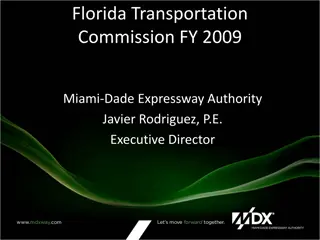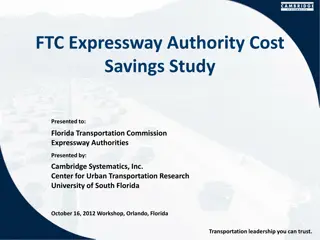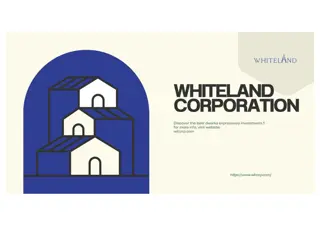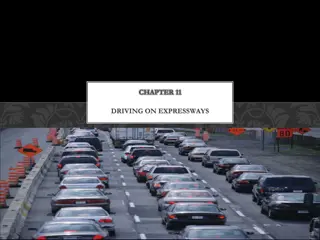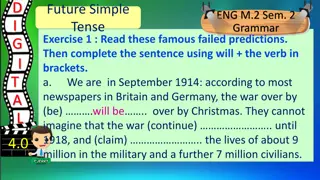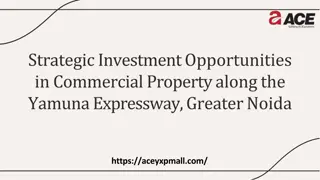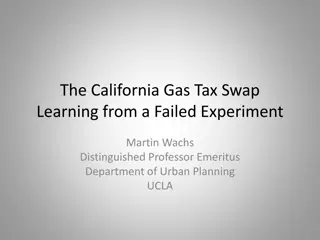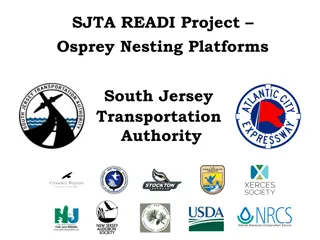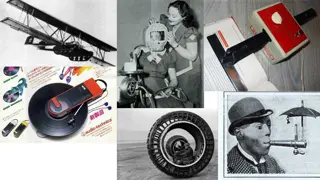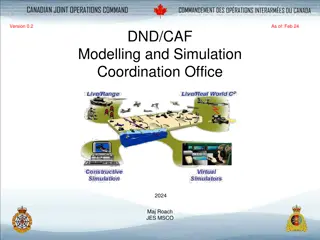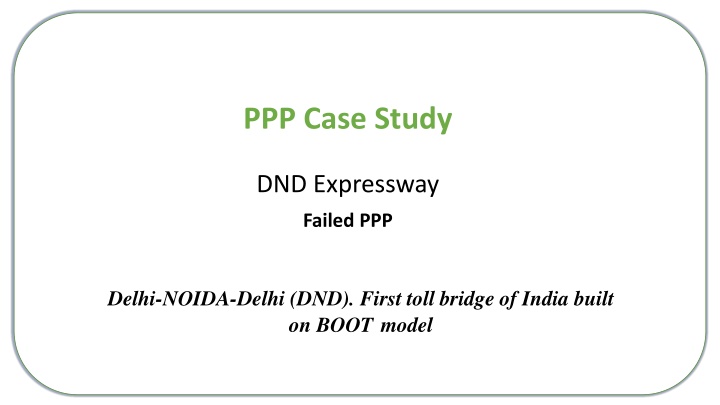
Case Study: Failed PPP Project - DND Expressway Toll Bridge
Explore the case study of the failed Public-Private Partnership (PPP) project of the DND Expressway toll bridge between Delhi and NOIDA. This study delves into the background, structure, and challenges faced by the project, providing valuable insights into the complexities of infrastructure development in India.
Download Presentation

Please find below an Image/Link to download the presentation.
The content on the website is provided AS IS for your information and personal use only. It may not be sold, licensed, or shared on other websites without obtaining consent from the author. If you encounter any issues during the download, it is possible that the publisher has removed the file from their server.
You are allowed to download the files provided on this website for personal or commercial use, subject to the condition that they are used lawfully. All files are the property of their respective owners.
The content on the website is provided AS IS for your information and personal use only. It may not be sold, licensed, or shared on other websites without obtaining consent from the author.
E N D
Presentation Transcript
PPP Case Study DND Expressway Failed PPP Delhi-NOIDA-Delhi (DND). First toll bridge of India built on BOOT model
INTRODUCTION The New Okhla Industrial Development Authority (NOIDA) is a planned city in Uttar Pradesh, India, developed in 1976. Due to increased industrial activity, traffic volumes from Delhi to NOIDA increased, leading to frequent traffic jams. To address this, a fourth bridge across Yamuna was built on Build, Own, Operate and Transfer mode (BOOT) to ease traffic between Delhi, East Delhi, and NOIDA. The goal is to develop a world-class integrated industrial activity and quality residential, commercial, and institutional development. Ministry of Urban Development, GOI took initiative to create the fresh link and given limited Government resources and different administrative / government jurisdiction on the two sides of River Yamuna, MoUD invited a private partner for this project. MOU between NOIDA, Delhi Administration and IL&FS signed on April 7, 1992 to implement the Delhi Noida bridge project. MoUD constituted a steering committee in June 1992 to supervise project implementation. Officilas from MoUD, Government of Delhi, GoUP, Delhi Administration, DDA , NOIDA, MoST & IL&FS were nominated. All project approvals were accorded by steering committee in 1995. Figure 1 National Capital Region map
INTRODUCTION contd. On 9th April 1996, a SPV was promoted by ILFS known as NOIDA Toll Bridge Company Limited (NTBCL) for the purpose development, construction, operation and maintenance of bridge across river Yamuna. of On 12 November 1997, a concession agreement was entered into by NOIDA, NTBCL and IL&FS granting the right of building and operating the Delhi Noida toll concession agreement, NTBCL has been given the right commercially exploit the Delhi Noida toll bridge by levying tolls. The concession agreement provides that the concession shall last until the concessionaire has recovered the total project cost plus a return, which is 20% per annum of the total project cost. bridge to NTBCL. Under the to At the end of the concession period all the NTBCL s interest in the Delhi Noida toll bridge is to be transferred back to NOIDA for the nominal sum of Rs 1. On 14th Jan 1998 a SupportAgreement was signed between Government of UP & Govt of NCT Delhi to extend complete support to NOIDA & implementation of the project. Interoll Management Services BV, Netherlands a 100% subsidiary of Intertoll holdings (PTY), South Africa was appointed as the Operation and Maintenance Manager on 21st December 1998. NTBCL with respect to Figure 2 NOIDA Toll Bridge
Salient Features of the Concession PPPModel Build -Own-Operate-Transfer (BOOT) Concession Structure Fixed Return, Variable Period Concession Period 30 years or earlier if return achieved Return on Investment PostTax IRR of 20% pa ProjectAuthority NOIDA/GoUP & DG Concessioner NOIDAToll Bridge Co. Ltd Recovery mechanism Tolls, indexed annuallyto CPI Transfer Free of cost to NOIDA
Growth Scenarios Key consideration Key Issues Assumption Figure 3 Broad PPP Structure of DND Toll Bridge Figure 3 Broad PPP Structure of DND Toll Bridge
Growth Scenarios Key consideration Financing of Project Assumption Total cost of the project was worked out to be Rs. 408.20 Cr. This comprised an equity of Rs. 122.40 Cr and debt of Rs.285.8 Cr. NOIDA toll bridge was implemented on BOOT format through a special purpose vehicle (SPV), the NOIDA Toll Bridge Company Limited (NTBCL). Shareholders include the NOIDA Authority, IL&FS, IFCI and Intertoll.
Growth Scenarios Key consideration Key Highlights of the Project The DND bridge project is a landmark, path-breaking Public Private Partnership (PPP) project in India first of its kind which confirmed Assumption that private capital could indeed be attracted to provide public infrastructure services in India despite numerous challenges in designing, structuring and developing PPP. The project was completed within budget and ahead of schedule. This project was also successful in raising investment funds from capital markets (including an issue of GDRs overseas). Following significant shortfalls in projected traffic and revenues, it was also successful in restructuring its debt after the first year of operation The first toll road and PPP SPV in the country, listed on the stock exchange. The PPP project's initial revenues fell short of projected, causing significant losses. NTBCL only achieved its first book profit in 2006-17, highlighting the need for modern concession agreements to mitigate revenue shortfalls and excesses. The concessionaire received approval for Development Rights, but the agreement should have been more transparent about PPP criteria and how Development Income would reduce NTBCL project costs. ILFS was a lender to the SPV created for DND toll. The SPV itself was floated by IL & FS. The role of IL&FS (as a lender) in the selection processes of Independent Auditor and Independent Engineer for the SPV result in conflict. The modern-day PPP structuring clearly defines the projectauthority and concessioner & borrower thereby avoiding any conflict. As a sole source negotiated project, the DND bridge project did not face the market test of commercial viability that is usually provided by a competitive concessionaire selection process. Modern day Procurement Process for PPP projects very clearly stipulates that the Private Sector Company (SPV) shall be selected through transparent and open competitive bidding process.
Growth Scenarios Key consideration Key Highlights of the Project contd. Assumption The concession agreement did not spell out the penalty payments or sanctions for not adhering to performance specifications/standards. The concessionaire had been given the right to mortgage the project assets, including the project site. This reduced the concessionaire s risk significantly. Modern day PPP projects do not provide right to mortgage. The cost of borrowing was significantly higher for the SPV (average 16%) and banks do not fund long term debt. The high cost of borrowing had a severe negative impact on the DND PPP project. Infrastructure development requires long-term low-cost capital. To conclude the concession agreement for the DND bridge project had several features that weighed the contract in favor of the private partner and that, from a public policy viewpoint, departed from best practice contract design. Some of the aspects mentioned above reflect errors of inexperience that could be expected in one of the first BOOT projects successfully promoted in India.
Growth Scenarios Key consideration Key Project Benefits Assumption Substantial saving in travel time between Delhi & NOIDA Reduction in fuel consumption and pollution Saving in fuel and other vehicle operating costs to the users Direct employment during construction and operation Reduced congestion on existing bridges Improved linkages between NOIDA and Delhi with stimulus to overall economic activity in the region.
Key Learnings from the PPP 1. Efficacy of PPP Projects in India: This project confirmed that private capital could indeed be attracted to provide public infrastructure services in India despite numerous challenges in designing, structuring and developing. There is now an example of a major toll bridge in a major urban area in India, where there was no such example earlier. 2. Treatment of shortfall / surplus in revenue from projected figures: The shortfall in revenues from toll collection from the initial projections as per the traffic study was a key learning from this project. Modern day Concession agreements mitigate both scenarios of shortfall as well as excess in revenue projects. The actual revenues in this PPP project fell far short of projected revenues (28% of projections for the first year) in the initial years of operation of the bridge, leading to significant losses which were added to total project cost. 3. Willingness-to-pay: Must be evaluated very carefully in such projects. Willingness to pay must be explicitly assesses for truckers and for bus operators (individual owners as well as corporate and fleet owners and operators)
Key Learnings from the PPP contd. 4. Traffic & Population forecasts: These forecasts have to be more realistic and rigorous. The reason for lower- than-expected traffic, particularly in the initial years was attributed to inadequate feasibility analysis for this kind of a toll project. 5. Transparency in concession agreement: The concession agreement should have been more transparent about the criteria for award of PPP and the way in which Development Income would be applied towards reducing total project costs of NTBCL. Again, the modern day CAs are more transparent and explicit in defining the development rights under the concession. 6. Conflict of Interest: ILFS and its own SPV was playing multiple roles of Project authority, Lender, Concessioner and borrower. The modern-day PPP structuring clearly concessioner & borrower thereby avoiding any conflict defines the projectauthority and 7. Transparency in Procurement & Price Discovery: There was no formal bidding for procurement in a fair & transparent manner as is done nowadays. Thus, there was no price discovery on project bidding parameters.

